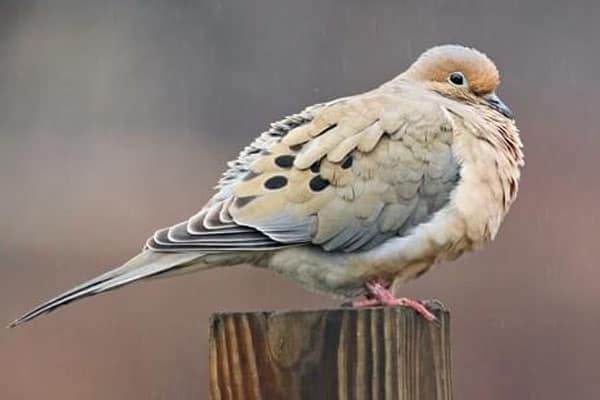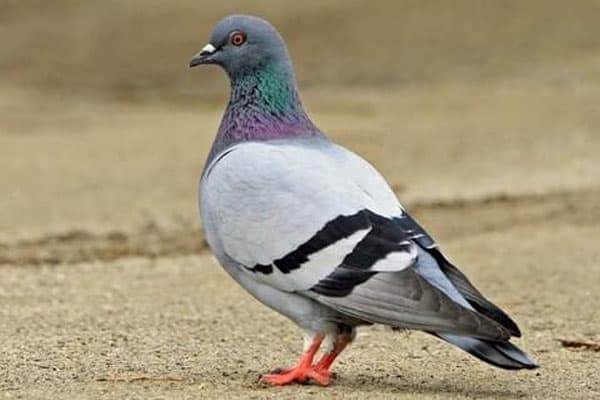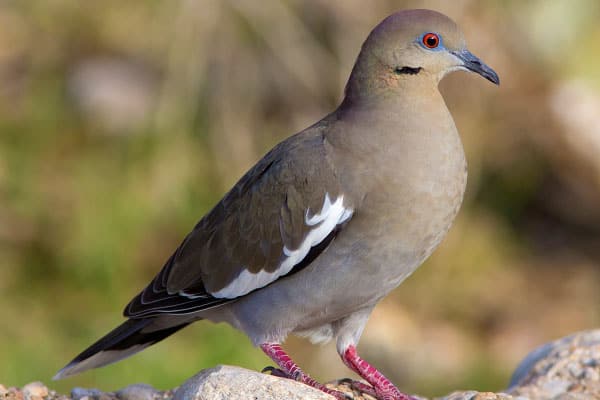Have you ever wondered which feathered friends call the Peach State home? Georgia is a haven for a diverse array of doves and pigeon species, each with its own unique story to tell. Join us as we explore the captivating world of 5 remarkable birds that have made Georgia their sanctuary.
What sets these doves and pigeons apart, and how have they adapted to thrive in the varied landscapes of Georgia? From the iconic mourning dove to the elusive common ground dove, we’ll delve into the characteristics, behaviors, and habitats of these fascinating feathered residents. Prepare to be captivated by the stunning photography and intriguing insights that await you in this article.
So, what makes these 5 doves and pigeons so special, and why are they an integral part of Georgia’s diverse avian community? Let’s find out together as we uncover the secrets of these remarkable creatures.
Introduction to Georgia’s Diverse Dove Population
Georgia is home to a diverse array of dove species, each with its own unique characteristics and adaptations to the state’s varied landscapes. From the rolling hills of north Georgia to the coastal marshes of the south, these feathered residents have found a way to thrive in the Peach State. In this article, we’ll explore the fascinating world of doves, delving into the specific species that call Georgia home and the factors that contribute to their survival in this diverse region.
Doves, a close relative of pigeons, are a captivating group of birds that have captured the imagination of people worldwide. These gentle, often cooing creatures are not only visually stunning but also play a vital role in the ecosystems they inhabit. As we delve into the diverse dove species in Georgia, we’ll uncover the unique adaptations and behaviors that have allowed these birds to flourish in the state.
Georgia’s Unique Geographical Features
The state of Georgia boasts a diverse array of habitats, from the rugged mountains of the north to the lush coastal plains of the south. This geographical diversity has created a range of environments that cater to the specific needs of different doves species in Georgia, allowing them to thrive and contribute to the overall Georgia’s bird population. In the sections that follow, we’ll explore how these diverse landscapes have shaped the lives of Georgia’s dove residents.
1. Mourning Dove
As one of the most ubiquitous and recognizable bird species in Georgia, the mourning dove has become a beloved part of the state’s natural landscape. With its distinctive cooing call and graceful, effortless flight, the mourning dove is a familiar sight in backyards, parks, and throughout the diverse habitats that make up the Peach State.

Identifying Features and Behavior
The mourning dove is easily identifiable by its slender, streamlined body, long tapered tail, and distinctive black spots on the wings. Its soft, mournful coo, often described as a “cooOOoo-oo-oo-oo,” is a hallmark of the species and can be heard throughout the day, particularly in the early morning and late afternoon hours. Mourning doves are known for their swift, agile flight, often darting between perches and making quick, banking turns.
In terms of behavior, the mourning dove is a social bird, often seen in small flocks or pairs. They are known to be prolific breeders, with the ability to produce up to six broods per year, making them a common sight around nesting sites and feeding areas throughout Georgia.
Habitat and Nesting Habits
The mourning dove’s adaptability has allowed it to thrive in a wide range of habitats across Georgia, from urban and suburban areas to rural farmlands and woodlands. They are particularly drawn to open spaces with a mix of trees, shrubs, and grassy areas that provide both nesting sites and abundant food sources, such as seeds and grains.
When it comes to nesting, mourning doves build simple, flimsy platforms of twigs, grass, and other plant materials, often situated in the fork of a tree or on a ledge. These nests are typically reused and added to over multiple breeding seasons, demonstrating the species’ resourcefulness and resilience in the face of changing environmental conditions.
With their ubiquitous presence and beloved status among Georgia’s residents, the mourning dove has become an iconic symbol of the state’s diverse avian population. Through a deeper understanding of their identifying features, behaviors, and habitat preferences, we can appreciate the important role this species plays in the rich tapestry of Georgia’s natural heritage.
2. Rock Pigeon
The rock pigeon, commonly known as the city pigeon, is another dove species that has found a home in Georgia. These adaptable birds have taken up residence in urban and suburban areas, thriving on the abundance of food and shelter provided by human environments. In this section, we’ll explore the unique characteristics and habitat preferences of the rock pigeon, and how it has become a familiar sight in Georgia’s cities and towns.

The rock pigeon, also referred to as the rock dove, is one of the most widely distributed and adaptable members of the dove family. These birds are known for their distinctive gray plumage, iridescent neck feathers, and stout, rounded bodies. Their ability to thrive in urban and suburban environments has made them a ubiquitous presence in Georgia’s cities and towns, where they can be spotted foraging on the ground or perched on rooftops and ledges.
The rock pigeon’s success in Georgia can be attributed to its flexible diet and nesting habits. These birds are opportunistic feeders, readily consuming a variety of grains, seeds, and even scraps of food found in human-populated areas. Their nesting preferences also allow them to thrive in close proximity to people, as they often build their nests on buildings, bridges, and other man-made structures.
Check Our Previous Posts:
| Spotting 4 Types Of Doves in Indiana |
| When Do Bluebirds Nest in Florida? |
| Explore 12 TYPES OF BLACKBIRDS |
While some may view the rock pigeon as a nuisance, their presence in Georgia’s cities and towns is a testament to their ability to adapt and coexist with humans. Understanding the unique characteristics and habitat preferences of this dove species can help us appreciate the diversity of Georgia’s avian population and the ways in which different species have found a way to thrive in the state’s varied landscapes.
Doves in Georgia
In addition to the well-known mourning dove and rock pigeon, Georgia is home to several other dove species that have found their way to the state in recent years. The Eurasian collared-dove, a relative newcomer, has established a growing population in the state, while the vibrant white-winged dove has made its way from the southwestern United States to take up residence in the southern regions of Georgia.
3. Eurasian Collared-Dove
The Eurasian collared-dove, a medium-sized dove species, has become an increasingly common sight in various parts of Georgia. Originating from Europe and Asia, these doves first arrived in the United States in the 1980s and have since expanded their range, including establishing a presence in the Peach State.
With their distinctive black collar and pale gray plumage, Eurasian collared-doves have adapted well to urban and suburban environments, often found foraging in parks, backyards, and agricultural areas. As their population continues to grow, these doves have become an integral part of Georgia’s diverse dove species.
4. White-winged Dove

The white-winged dove, with its striking white wing patches and vibrant coloration, has also found a home in the southern regions of Georgia. Historically, this dove species was primarily found in the southwestern United States and parts of Mexico, but in recent decades, its range has expanded eastward, reaching the coastal areas of Georgia.
These doves thrive in a variety of habitats, including urban, suburban, and rural settings, often feeding on seeds, grains, and fruits. The presence of the white-winged dove has added a unique and visually appealing element to Georgia’s avian diversity.
| Dove Species | Habitat in Georgia | Key Characteristics |
|---|---|---|
| Eurasian Collared-Dove | Urban, suburban, and agricultural areas | Medium-sized dove with distinctive black collar and pale gray plumage |
| White-winged Dove | Urban, suburban, and rural settings | Vibrant coloration with striking white wing patches |
5. Common Ground Dove
While the mourning dove and rock pigeon may be the more familiar face of Georgia’s dove population, the common ground dove is a true hidden gem. As the smallest dove species found in the state, this diminutive bird has carved out a unique niche for itself within Georgia’s diverse ecosystems.
Distinctive Appearances and Behaviors
The common ground dove is easily distinguished by its diminutive size, measuring just 6-8 inches in length. Its plumage is a warm, earthy blend of browns and grays, with a distinctive black and white pattern on the underside of its wings that is visible in flight. One of the common ground dove’s most endearing traits is its tendency to scurry along the ground, rather than taking to the air, in search of seeds and small insects.
Habitat Preferences and Conservation Efforts
The common ground dove prefers open, grassy habitats, such as fields, pastures, and roadsides, where it can easily forage for its preferred food sources. However, as development and urbanization have encroached on these natural spaces, the population of common ground doves in Georgia has faced increasing challenges. Conservation efforts, such as maintaining suitable habitat and promoting public awareness, are crucial to ensuring the continued presence of this unique and captivating dove species in the Peach State.


Add comment